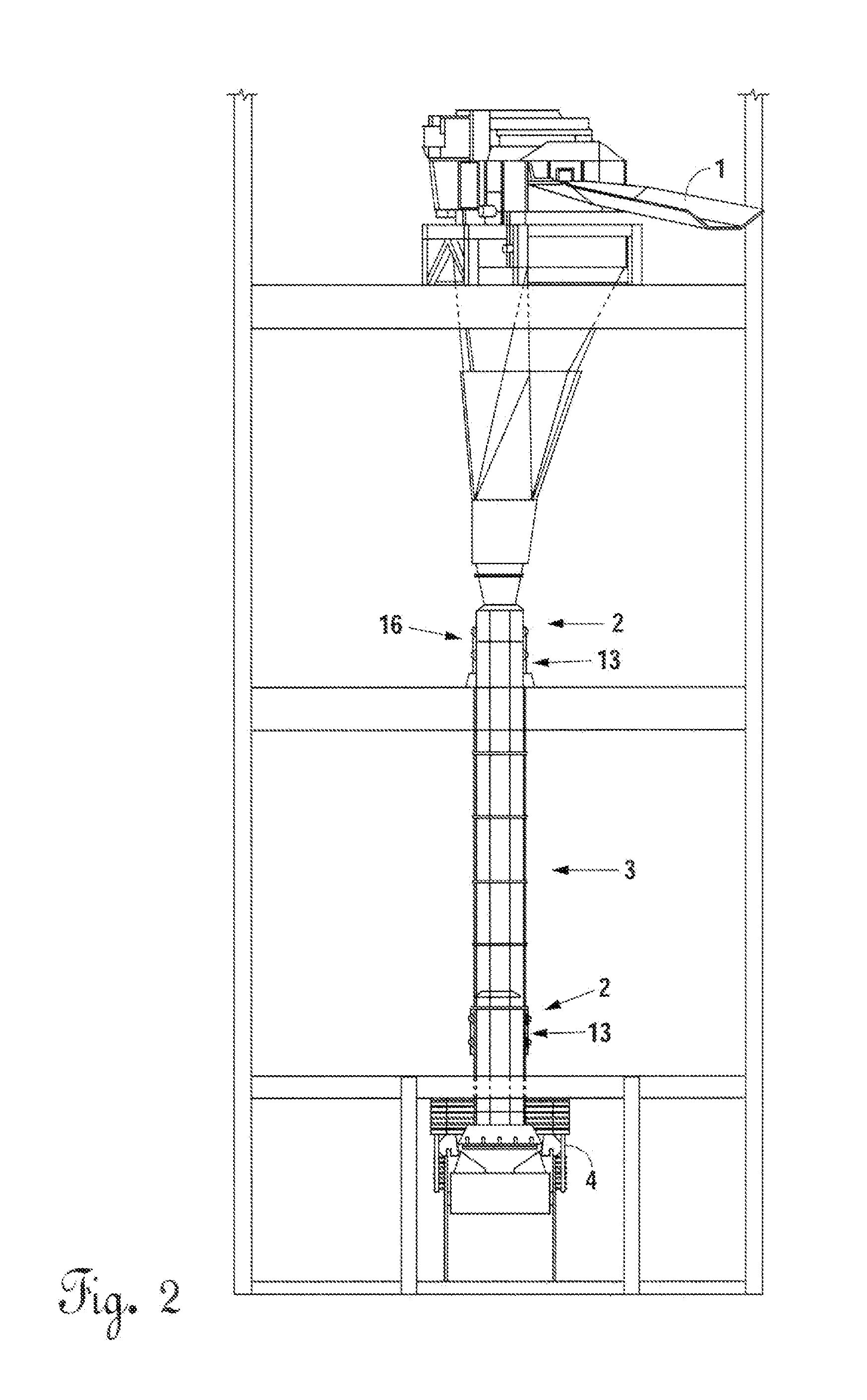Apparatus and Method for Passive Dust Control in a Transfer Chute
a technology of dust control and apparatus, which is applied in the direction of mechanical conveyors, chutes, loading/unloading, etc., can solve the problems of unscheduled shutdown of the conveyor transfer system, difficulty in maintaining a dust-free environment, and emission of dusty environment, so as to reduce noise, minimize the amount of air entrained, and reduce the effect of nois
- Summary
- Abstract
- Description
- Claims
- Application Information
AI Technical Summary
Benefits of technology
Problems solved by technology
Method used
Image
Examples
Embodiment Construction
[0035]A preferred embodiment of the instant invention is shown in typical installations such as shown in FIGS. 1 and 2. Dust control apparatuses 13 are shown installed into a bulk material transfer system 16. Multiple dust control apparatuses could be used depending on the type of transfer chute involved. The discharge conveyor 1 at the upper or top portion discharges bulk material 12 (see FIGS. 7-10) into the transfer chute 3, where the material runs down and along the transfer chute lower wall 3b. The material then passes through the one or more air restrictor locations 2 positioned along the chute and finally exiting the transfer chute 3 onto the exit conveyor 4 at the bottom of the chute.
[0036]Referring to FIG. 3, a dissected top view of the dust control apparatus 13 is shown. The transfer chute opening 5 is shown in the shape of a modified hexagon, but it may be in other geometric shapes, depending on the shapes of the transfer chute 3. The air restrictor gate or baffle 6 has a...
PUM
 Login to View More
Login to View More Abstract
Description
Claims
Application Information
 Login to View More
Login to View More - R&D
- Intellectual Property
- Life Sciences
- Materials
- Tech Scout
- Unparalleled Data Quality
- Higher Quality Content
- 60% Fewer Hallucinations
Browse by: Latest US Patents, China's latest patents, Technical Efficacy Thesaurus, Application Domain, Technology Topic, Popular Technical Reports.
© 2025 PatSnap. All rights reserved.Legal|Privacy policy|Modern Slavery Act Transparency Statement|Sitemap|About US| Contact US: help@patsnap.com



